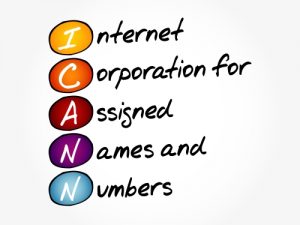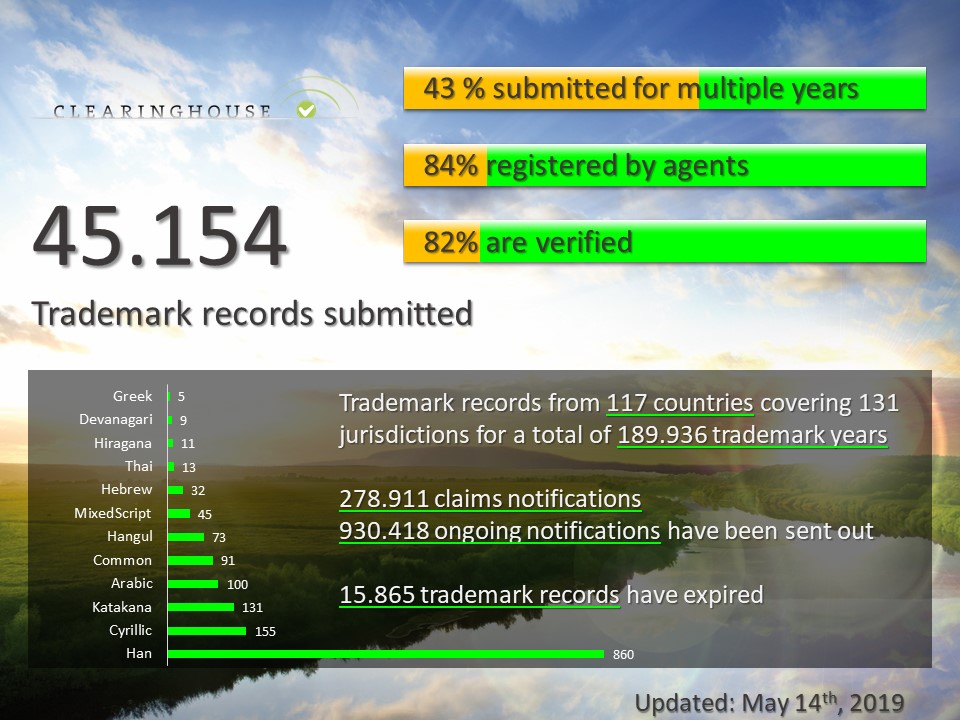“Trademark owners are encouraged to consider the full range of options available for protecting trademarks within new gTLDs, including the ICANN-mandated rights protection mechanisms (RPMs) and the related private RPMs, while taking care to note the contractual limitations or ‘fine print’ associated with each suite of services.”
 The Internet Corporation for Assigned Names and Numbers (ICANN) is the California-based nonprofit public-benefit organization with authority over the global Internet’s system of unique identifiers, e.g. IP addresses and domain names, known as generic top-level domains (gTLDs). ICANN’s New gTLD Program has seen the addition of more than 1,200 top-level domains to the Internet’s Domain Name System. Each new gTLD is contractually obligated to provide a set of trademark Rights Protection Mechanisms (RPMs), including mainly the Trademark Claims Service, Sunrise, and the Uniform Rapid Suspension system, discussed more fully below.
The Internet Corporation for Assigned Names and Numbers (ICANN) is the California-based nonprofit public-benefit organization with authority over the global Internet’s system of unique identifiers, e.g. IP addresses and domain names, known as generic top-level domains (gTLDs). ICANN’s New gTLD Program has seen the addition of more than 1,200 top-level domains to the Internet’s Domain Name System. Each new gTLD is contractually obligated to provide a set of trademark Rights Protection Mechanisms (RPMs), including mainly the Trademark Claims Service, Sunrise, and the Uniform Rapid Suspension system, discussed more fully below.
From the perspective of brand owners, new gTLDs—like the Internet itself—continue to create both opportunities and challenges for protecting intellectual property and serving consumers in the online marketplace.
Dot Brands
With respect to branding opportunities, trademark-based organizations submitted over 600 applications (roughly one-third of all submissions) to operate top-level domains that reflect their brand, commonly known as Dot Brands. Some brand owners applied to operate these domains for their potential benefits, including brand promotion, and to improve web security, organization, privacy and data collection. A separate number of these applications were submitted primarily for brand protection and related competition concerns, effectively in a defensive manner by brand owners.
There are currently over 500 Dot-Brands, representing a significant portion (40%) of all new gTLDs. In order to secure their branded top-level domain, trademark owners incurred substantial costs, including application fees ($185,000), reoccurring annual registry fees ($25,000), obtaining legal advice, and operational expenses.
After six years since the launch of the new gTLD program, and despite this overlay of these expenditures, many Dot Brands have not yet been fully leveraged for their potential benefits. In fact, 10% of all Dot Brands have been voluntarily decommissioned and taken offline by trademark owners.
From another perspective, a growing number of Dot-Brands are in a stage of further development. A frequently seen use case consists of using the branded top-level domain to host new websites, often on dedicated topics, such as a prominent blog website maintained by Google at <blog.google>. Other use cases include using the Dot Brand to restructure a company’s online presence, which can be accomplished by migrating content over to the Dot Brand address; for example, the U.S.-based accounting firm KPMG has relocated their Internet “home” to <home.KPMG>. Since Dot Brands are not used by trademark owners to sell domain registrations on the open market to unrelated third parties, they are free of registration abuse and, as a result, the RPMs are inapplicable within these spaces.
Open new gTLDs: Restrictions and RPMs
In “Open” new gTLDs, domain names are sold to third parties for the purposes of generating revenue. In open new gTLDs with eligibility restrictions, registries sell registrations only to registrants that meet specific eligibility criteria, including qualifying communities, entities, or individuals.
For example, in the .BANK new gTLD, registrations are limited to qualifying companies in the financial services industry. Within this domain, over 40% of U.S. banks have now registered domain names, and currently, several hundred banks worldwide host their primary website on the .BANK gTLD. Depending on the extent to which eligibility restrictions are strictly enforced in these gTLDs, abusive registrations can be prevented in the first instance by the registry’s operating rules and procedures.
However, in most new gTLDs, domains are sold without restrictions. While these new gTLDs may provide more choice to consumers, the openness of the registries creates challenges for trademark protection because registrants can register en masse trademark-corresponding domain names in bad faith.
RPMs: Preventative and Curative Mechanisms
Traditionally, trademark owners have relied upon national laws, including trademark statutes, common law, unfair competition laws, or specific anti-cybersquatting legislation, to combat cybersquatting through the judicial system, with all the accompanying costs, process, and formalities of the courts.
Going back 20 years, ICANN, in conjunction with the World Intellectual Property Organization (WIPO), developed the most often-used RPM, the Uniform Domain Name Dispute Resolution Policy (UDRP)—a streamlined arbitration procedure that operates in new gTLDs and legacy domains, like .COM.
Trademark owners have benefited from the UDRP as a cost-effective and highly-efficient protection, in part due to its speed of administration, as the process overall usually takes no more than 45 days from commencement to resolution. Upon a successfully adjudicated claim, a trademark owner may elect to have the abusively-registered domain name deleted, or to have the domain name transferred to their control under a registrar of choice. Since its formation, trademark owners have used the UDRP to resolve over 60,000 domain name disputes, with over 90% of UDRP cases consisting of .COM domains.
Developed for the new gTLD program, the Uniform Rapid Suspension (URS) system, operates in a curative manner similar to the UDRP, but with a higher burden of proof (clear and convincing) and with a remedy that is limited to the suspension of the domain name. As a result, the URS is less frequently used as compared to the UDRP, but continues to offer value in certain circumstances, including when the cybersquatter registers hundreds of second-level domains, and the brand owner prefers to suspend all the domain names until they expire, rather than further bloating their domain portfolios with defensive registrations.
Trademark Clearinghouse
As the new gTLD program rules were developed, IP associations such as the International Trademark Association (INTA) advocated for protections that would scale across hundreds of new domain spaces. To facilitate these objectives, the ICANN community created a Trademark Clearinghouse (TMCH) database to serve as a centralized repository of trademark records to interface with each new gTLD.
In order to receive the benefits of two preventative RPMs applicable in new gTLDs, namely the Sunrise and the TM Claims services (discussed below), trademark owners are required to make one submission in the TMCH. Currently, more than 45,000 trademark records are deposited, more than 200,000 TM Claims notices, and nearly 1 million Ongoing Notifications have been sent out through the database.
Sunrise Services
With the exception of Dot Brands, every new gTLD registry is required to offer trademark owners a period of at least 30 days to register domain names before offering them for sale to the general public. Brand owners utilize this priority registration period to secure domain names that identically match their trademarks, so long as the nationally-registered trademark and a corresponding “proof of use” record is recorded and verified by the TMCH operator. To date, approximately 140,000 domain names have been registered during Sunrise, at varying levels of cost, with some registries charging up to several thousand dollars per Sunrise registration.
To assist trademark owners in navigating the database, the TMCH has developed a Quick Reference manual on topics such as: How to Register, Submitting a TM Record, Submitting Proof of Use, Editing Records, and related functionalities. Sunrise periods upcoming in the near future include the <.MADRID> (16 July) and <.ZUERICH> (22 July) new gTLDs.
Trademark Claims
The Trademark Claims—a notification service operating during the first 90 days of a new gTLD’s launch—also functions off the TMCH. The Claims service places prospective domain name registrants on notice when they attempt to register a second-level domain name that matches a trademark recorded in the TMCH. If the registrant accepts the notice and proceeds to register the domain name, the trademark owner receives a notification via email, enabling them to analyze the registration and consider potential enforcement action in real-time. Current TMCH Trademark Claims notifications are active for the <.Inc> new gTLD.
Private RPMs
To complement the ICANN-mandated RPMs, the TMCH operator and individual registry operates offer additional protections. For example, following the 90-day claims period, the TMCH runs an Ongoing Notifications service, which notifies the trademark owner when a domain name is registered that identically matches their trademark. This free, optional service runs for an indefinite period of time, extending past the original 90 day period of TM Claims. To identify domains beyond exact match, additional variation labels for Ongoing Notifications can be added to the mark for the price of $1.00 per label per year. The TMCH also offers a separate fee-based service known as TREx, which restricts the registration of trademark-matching domain names across participating new gTLDs that are under contract with TMCH, as per the terms of service.
Similar to the TREx service, several of the larger ‘portfolio’ registry operators utilize the TMCH to provide service offerings which “block” domain names that match trademarks within their new gTLDs. Examples of these private registry offerings include the Donuts Domains Protected Marks List, i.e. DPML and DPML Plus, and the Uniregistry Extended Protection Service (EPS) program.
Trademark owners are encouraged to consider the full range of options available for protecting trademarks within new gTLDs, including the ICANN-mandated RPMs and the related private RPMs, while taking care to note the contractual limitations or “fine print” associated with each suite of services. For example, some of the private RPMs function as subscriptions and are limited in both duration and scope.
Review of RPMs: Serving their Intended Purpose?
From a policy development perspective, the volunteer ICANN community is currently reviewing the RPMs, including the UDRP and those protections applicable in new gTLDs, to analyze whether they are serving their intended purpose. Membership on the ICANN review team is open to all stakeholders under ICANN’s rules of engagement. The RPM review team is considering whether any changes should be made to the RPMs from the perspective of brand owners, noncommercial users, and ICANN’s contracted parties.
Members of the intellectual property community are welcome to participate directly on the RPM Review team and can join the Intellectual Property Constituency to facilitate their involvement in ICANN
Image Source: Deposit Photos
Vector by dizanna
ID: 262909860

![[IPWatchdog Logo]](https://ipwatchdog.com/wp-content/themes/IPWatchdog%20-%202023/assets/images/temp/logo-small@2x.png)


![[Advertisement]](https://ipwatchdog.com/wp-content/uploads/2024/04/Patent-Litigation-Masters-2024-sidebar-early-bird-ends-Apr-21-last-chance-700x500-1.jpg)

![[Advertisement]](https://ipwatchdog.com/wp-content/uploads/2021/12/WEBINAR-336-x-280-px.png)
![[Advertisement]](https://ipwatchdog.com/wp-content/uploads/2021/12/2021-Patent-Practice-on-Demand-recorded-Feb-2021-336-x-280.jpg)
![[Advertisement]](https://ipwatchdog.com/wp-content/uploads/2021/12/Ad-4-The-Invent-Patent-System™.png)






Join the Discussion
One comment so far.
download
July 4, 2019 03:21 pmI like reading through an article that can make people think.
Also, thank you for allowing for me to comment!